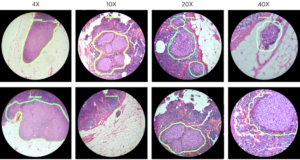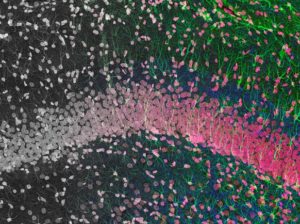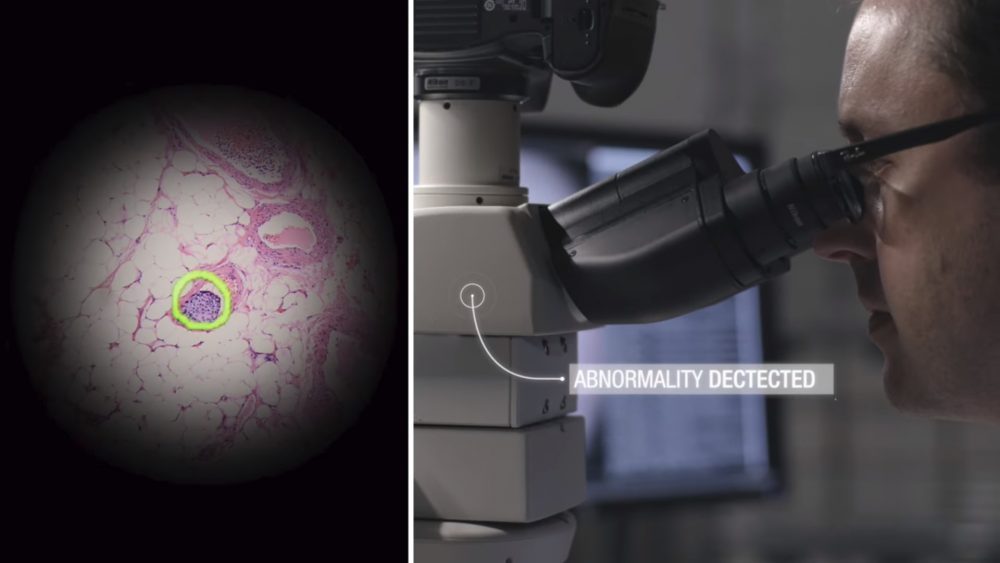The days of highly trained specialists being required to perform analysis of medical images is coming to a close. There is an avalanche of neural networks trained by deep learning with large medical datasets performing analysis and categorization of images which once would have required years of specialist training.
Google Research recently showed off their new Augmented Reality Microscope which performs analysis of samples in real time. A sample being imaged by a techncian through a standard microscope is sent to a convolutional neural network trained to detect cancer cells. If cancer is found indicators are added to the image to show the location of the potentially cancerous cells. The system can be installed into existing microscopes, which will make the system more affordable.

A similar approach is being use to detect diabetic retinopathy. This condition occurs when there is sustained high blood sugar levels causing damage to the retina’s blood vessels. The US Federal Drug Administration has just approved a system called IDx-DR which performs analysis of images captured by a specialist camera called the Topcon NW400. The analysis is performed by a convolutional neural network trained to detect diabetic retinopathy.
Google has also collaborated with Steven Finkbeiner, a scientist at Gladstone Institutes and UC San Franciscon to train a covolutional network to analyze neuronal cells in cultures. Large datasets of images that have been previously categorized by trained students provided the foundational training data for the neural network. This new approach avoids the introduction of dyes into the samples, which is less harmful to the samples resulting in better consistency. As a result labs do not require an army of lab technicians to perform the observation and analysis.

Machines do not get tired or distracted. Their work is more consistent and reliable than that of humans. To date we have had little option than to rely of human analysis of sample images. With the advent of deep learning and the availability of hardware platforms that run neural networks, along with the availability of extensive image datasets that have already been analyzed, it is be possible to use this technology for a broad range of medical applications.

